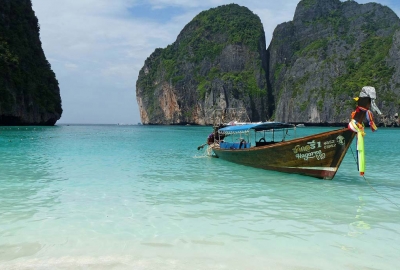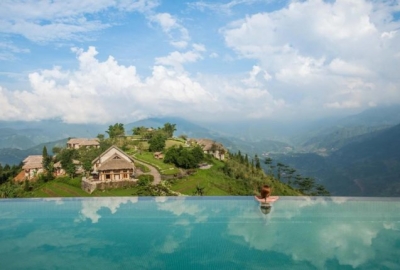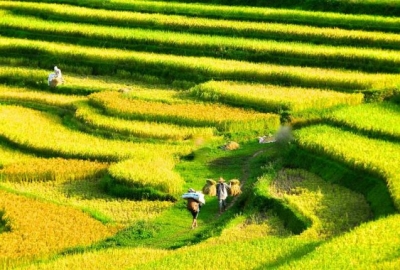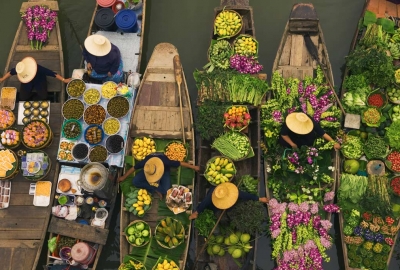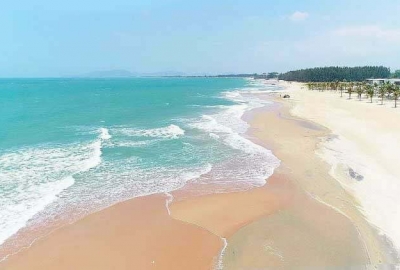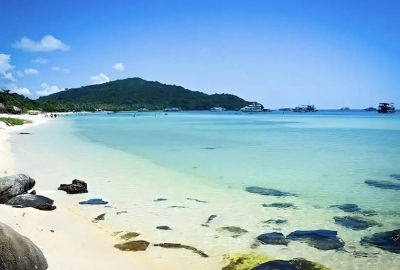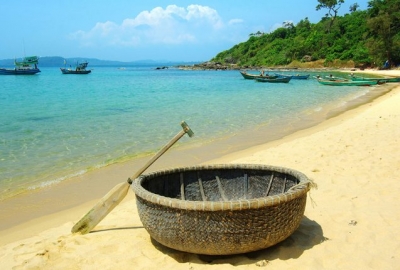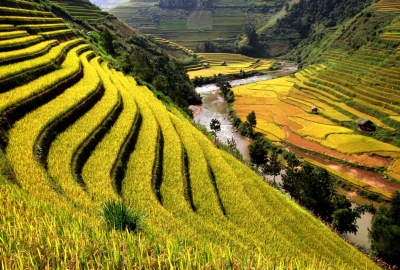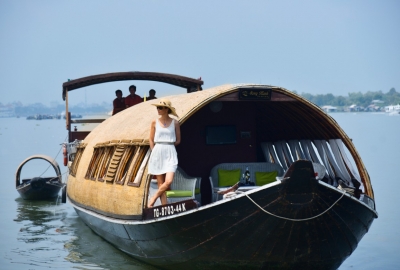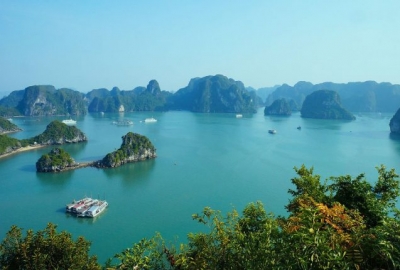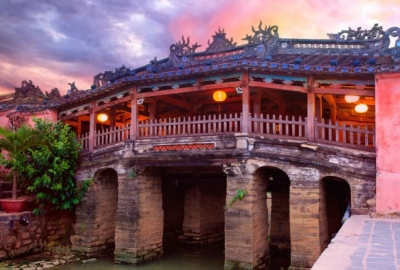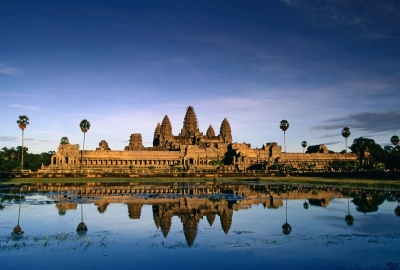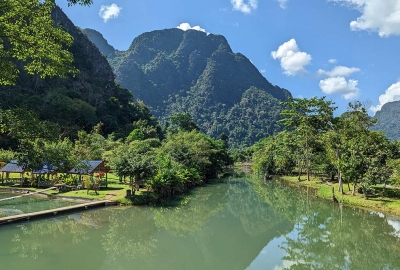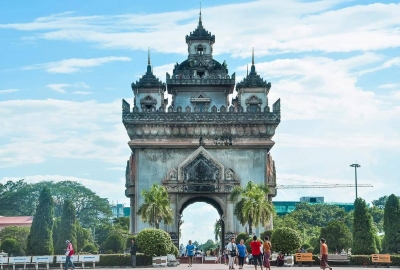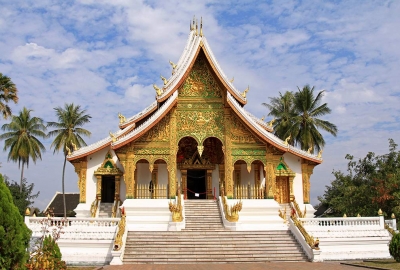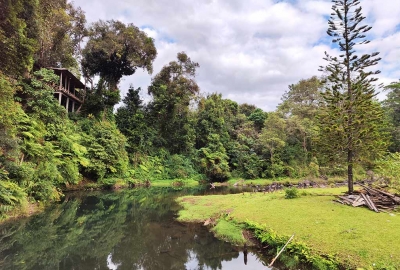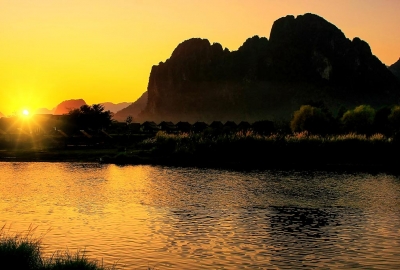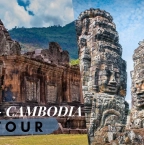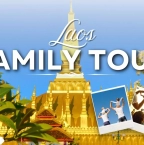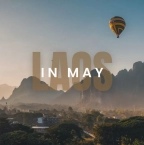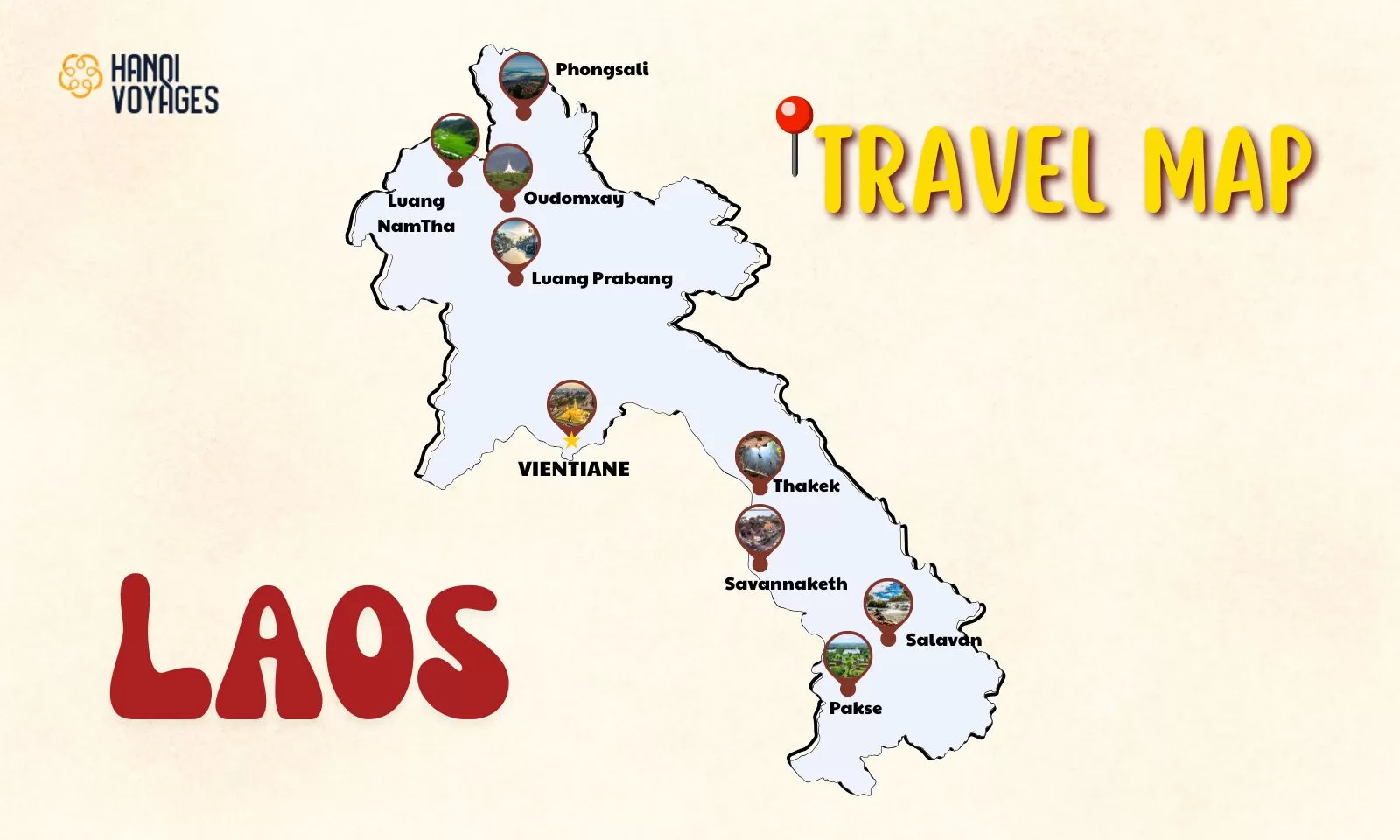
Laos travel map: Your ultimate guide to exploring the country
Laos travel map is your essential guide to exploring the heart of Indochina, from tranquil river islands to majestic mountain towns. This regional travel overview features top destinations and smart Laos travel itinerary ideas for an authentic journey.

Laos is a land of misty mountains, ancient temples, and timeless river life - stretching from the peaceful hills of the north to the laid-back islands of the south. A Laos travel map is your key to discovering it all. This regional map will take you through must-see destinations in Laos.
Let Hanoi Voyages be your trusted companion as you uncover the magic of Laos with ease and authenticity.
Table of Contents
Laos’s geography: What you need to know
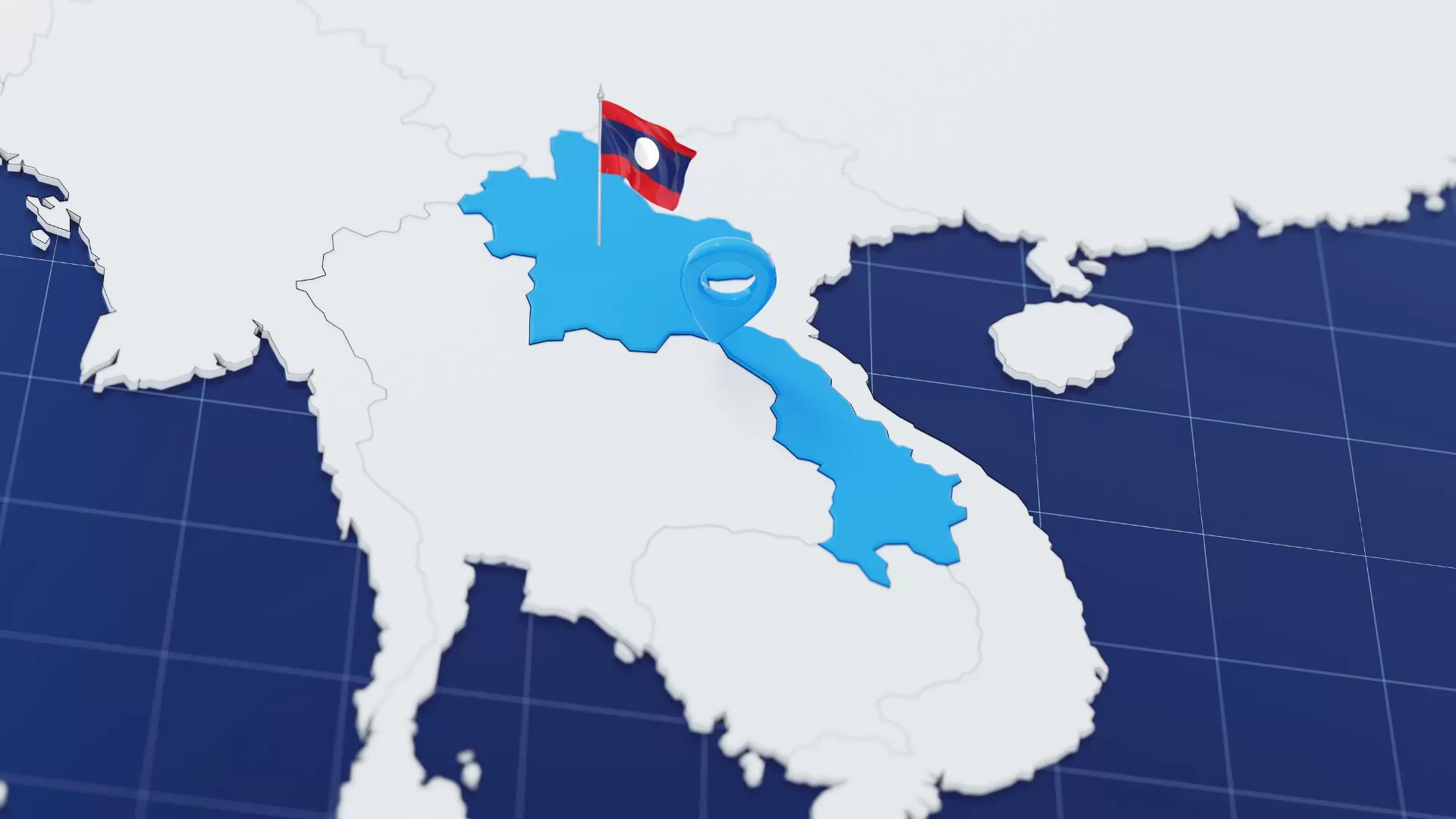
Laos, located in the heart of mainland Southeast Asia, is a landlocked country known for its mountainous terrain, lush landscapes, and peaceful river life. Though it has no coastline, a Laos travel map reveals a rich tapestry of geographical diversity - from mist-covered highlands to tropical lowlands along the majestic Mekong River.
Laos shares borders with China to the north, Vietnam to the east, Cambodia to the south, Thailand to the west, and Myanmar to the northwest. The country is long and narrow with the Mekong River running along much of its western edge - a lifeline for agriculture, transport, and culture.
Laos can be roughly divided into three geographic regions, each offering unique scenery and travel experiences:
📍 Northern Laos
Characterized by dramatic mountains, deep valleys, and ethnic diversity, Northern Laos is a haven for trekkers and culture seekers. Destinations like Luang Prabang, Nong Khiaw, Muang Ngoi, and Phongsali offer beautiful landscapes. The terrain is rugged and forested, with cooler temperatures, especially in the highlands.
📍 Central Laos
This region features a mix of karst limestone landscapes, rivers, caves, and small towns. It’s home to Vang Vieng, known for its scenic cliffs and adventure sports, and Vientiane, the laid-back capital city nestled by the Mekong. The Plain of Jars in Phonsavan offers mystery and history. The climate is tropical with distinct wet and dry seasons.
📍 Southern Laos
Southern Laos is flatter and more laid-back, offering wide open spaces, fertile land, waterfalls, and river life. The Bolaven Plateau is known for coffee plantations and cool weather, while Wat Phou in Champasak showcases ancient Khmer ruins. At the far south, the 4000 Islands (Si Phan Don) region on the Mekong invites visitors to relax, kayak, and spot freshwater dolphins. The area is warm year-round with a pronounced rainy season.
From the mountainous north to the riverine south, Laos’s geography deeply influences its culture, lifestyle, and travel opportunities. A well-planned Laos travel itinerary, guided by a detailed Laos travel map, will help you uncover the natural beauty and quiet charm of this peaceful land.
Northern Laos travel map: Top destinations and attractions
As you explore the Laos travel map, the northern region stands out as a treasure trove of serene landscapes. Nestled among limestone mountains and winding rivers, Northern Laos is ideal for travelers seeking authenticity, connection with nature, and meaningful cultural experiences.
Luang Prabang – The spiritual heart of Laos
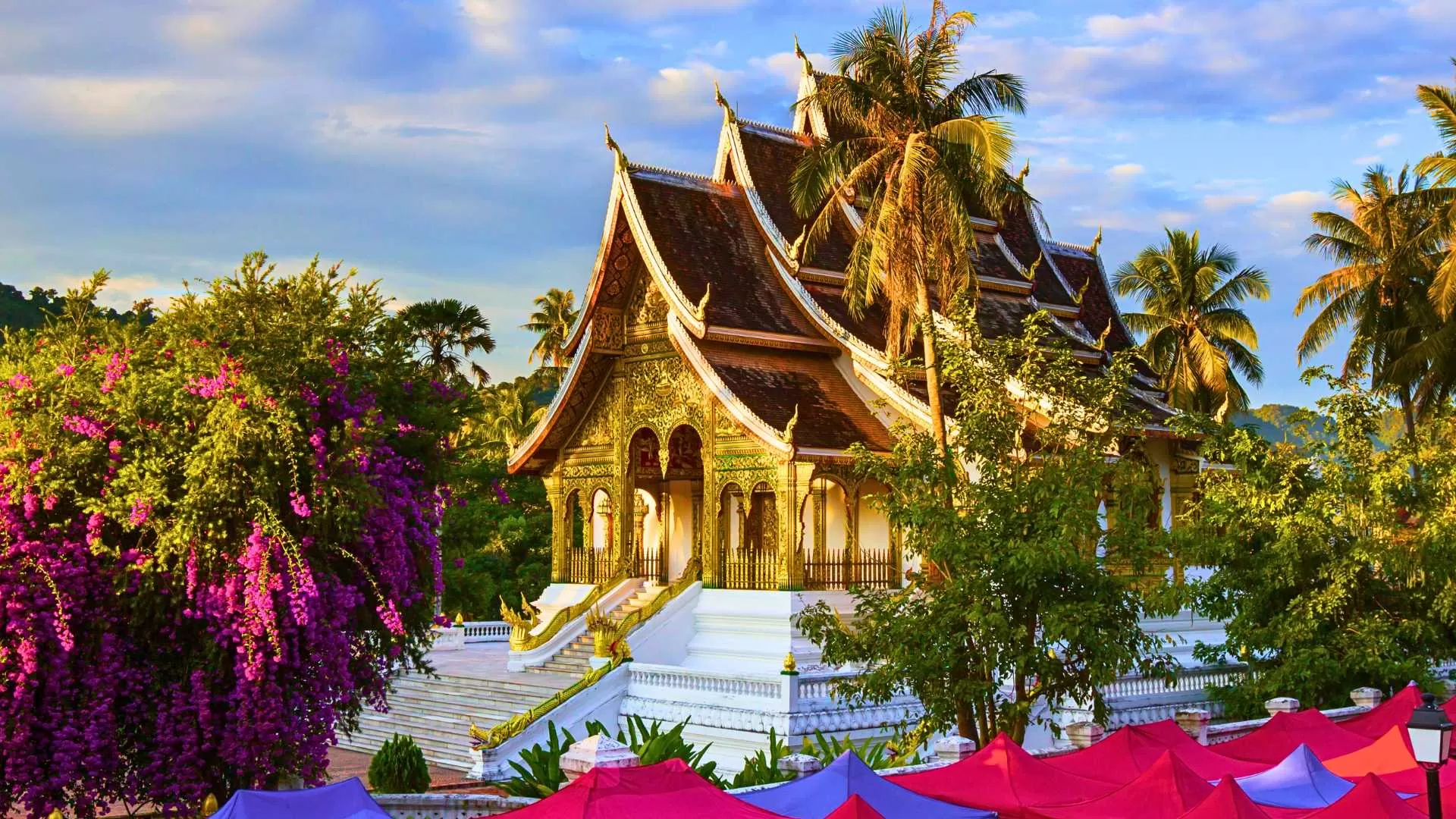
Located in the north-central part of the Laos travel map, Luang Prabang lies at the confluence of the Mekong and Nam Khan rivers. Once the royal capital of the Kingdom of Laos, this UNESCO World Heritage Site is often considered the most enchanting city in the country. Its tranquil atmosphere, golden temples, and French colonial architecture make it a must-visit destination for anyone exploring Laos.
Top things to do in Luang Prabang:
Wat Xieng Thong – one of the oldest and most beautiful temples in Laos.
Morning alms-giving ceremony – a sacred ritual where you can witness monks collecting offerings at dawn.
Kuang Si Waterfalls – a stunning turquoise cascade tucked in the jungle.
Luang Prabang Night Market – a vibrant place to shop for handicrafts and taste local street food.
Nong Khiaw – A peaceful riverside retreat
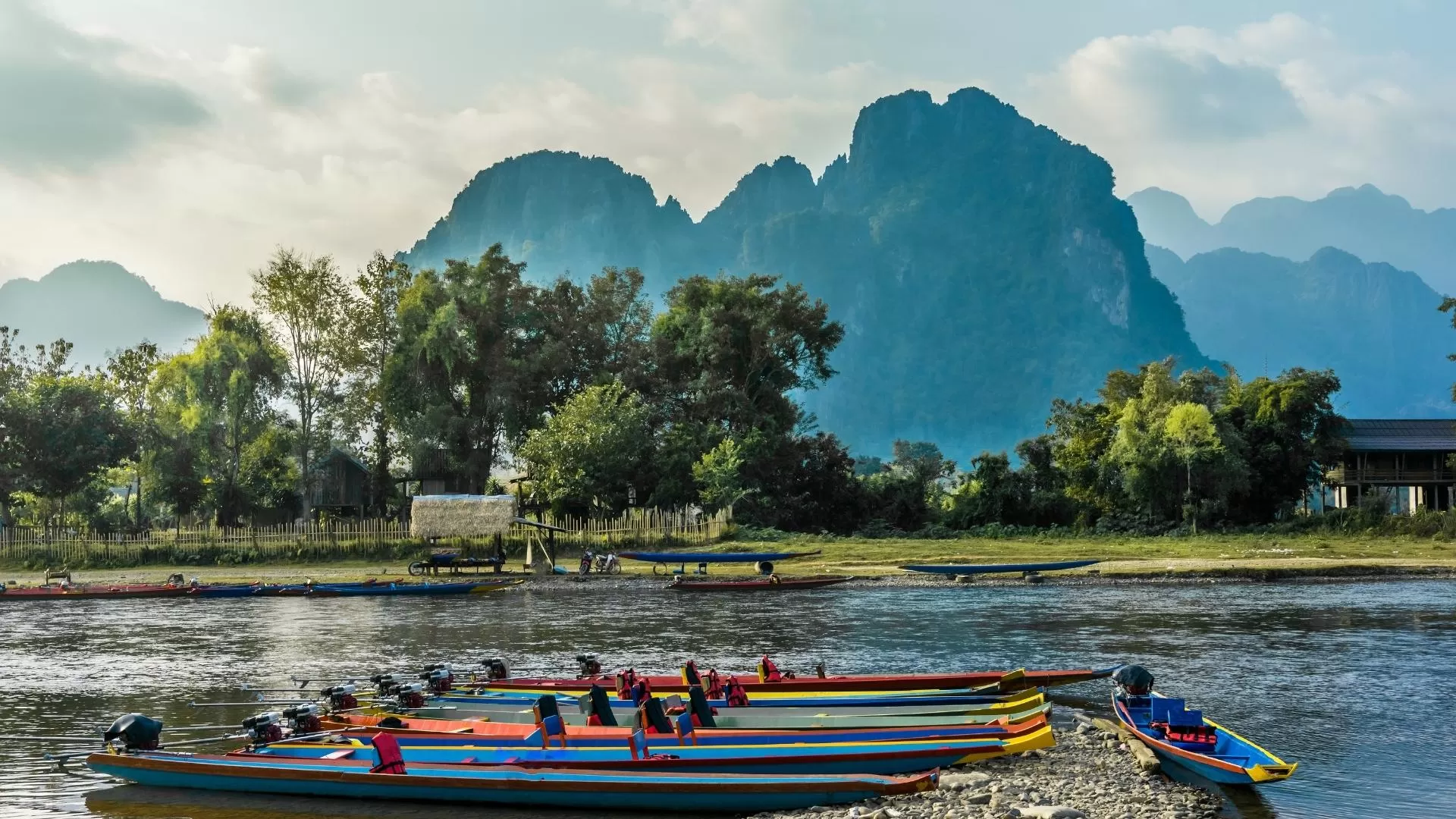
Following the Laos travel map northeast from Luang Prabang, you’ll find Nong Khiaw, a small town resting on the banks of the Nam Ou River. Enclosed by towering limestone cliffs and dense jungle, Nong Khiaw offers stunning natural scenery and a slow-paced, calming environment. It’s the perfect destination for travelers seeking a slower pace, scenic landscapes, and authentic local culture.
Unmissable experiences in Nong Khiaw:
Hike to Pha Daeng Viewpoint – for an incredible panoramic view at sunrise or sunset.
Kayak along the Nam Ou River – explore the natural beauty from the water.
Visit Pha Tok Caves – once a wartime shelter, now an intriguing historical site.
Muang Ngoi Neua – A hidden village in the mountains
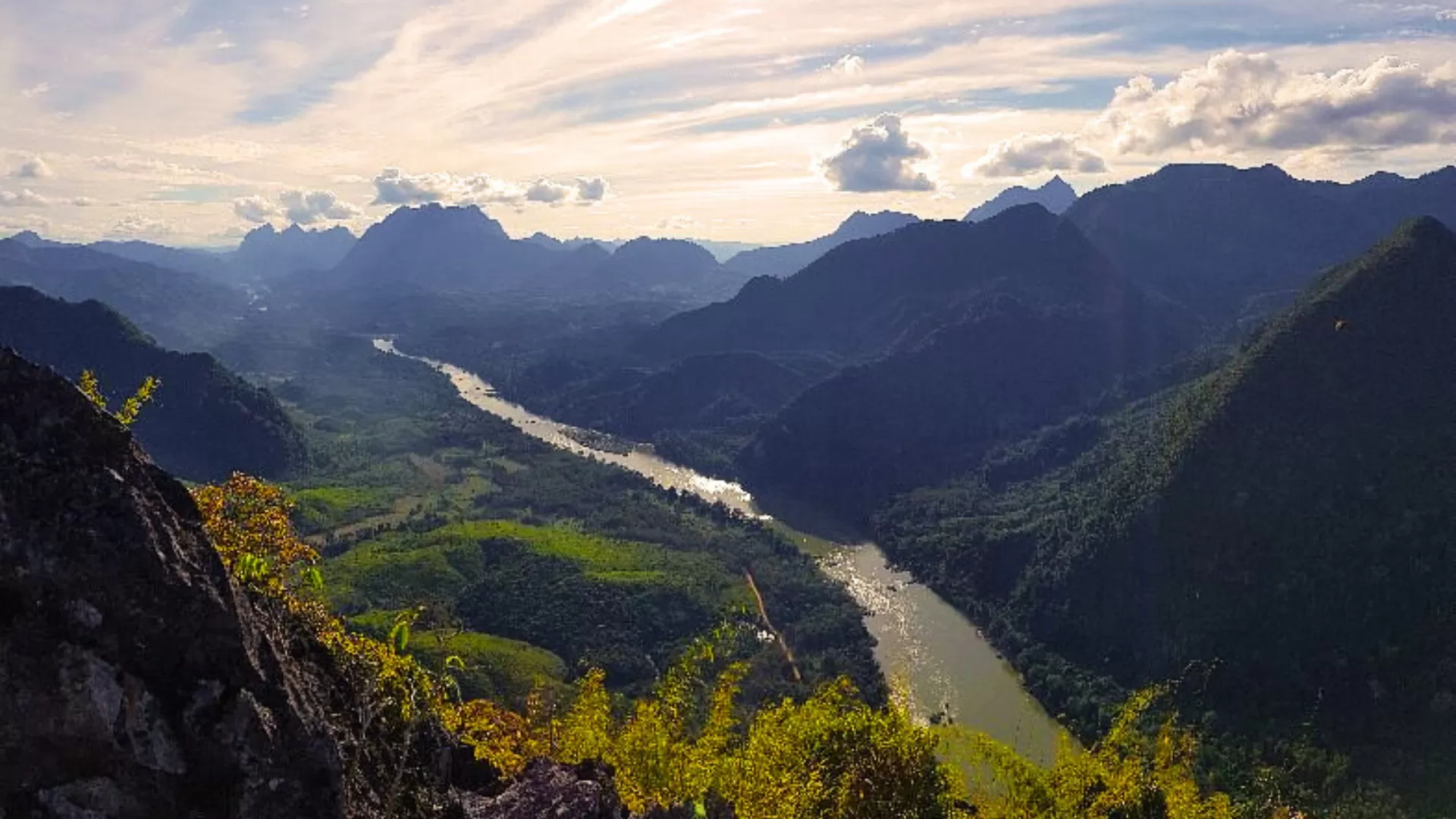 Muang Ngoi Neua is a small town located along the poetic Nam Ou River. This is an ideal destination for tourists who love peace. Muang Ngoi Neua is likened to an oasis hidden among majestic mountains, giving visitors a completely different experience compared to other bustling tourist areas in Laos.
Muang Ngoi Neua is a small town located along the poetic Nam Ou River. This is an ideal destination for tourists who love peace. Muang Ngoi Neua is likened to an oasis hidden among majestic mountains, giving visitors a completely different experience compared to other bustling tourist areas in Laos.
Muang Ngoi is perfect for backpackers and nature lovers looking to explore:
Trek to nearby ethnic villages like Ban Na or Ban Huay Bo, where you can interact with Hmong and Khmu communities and experience their daily life.
Discover Tham Kang Cave.
Swim or kayak in the Nam Ou River.
Central Laos travel map: Highlights for every traveler
When looking at a Central Laos travel map, you’ll find a region that offers an ideal mix of natural beauty, cultural heritage, and unique experiences. These top destinations in Central Laos will give you a deeper connection to the heart of the country.
Vang Vieng – A peaceful and romantic town
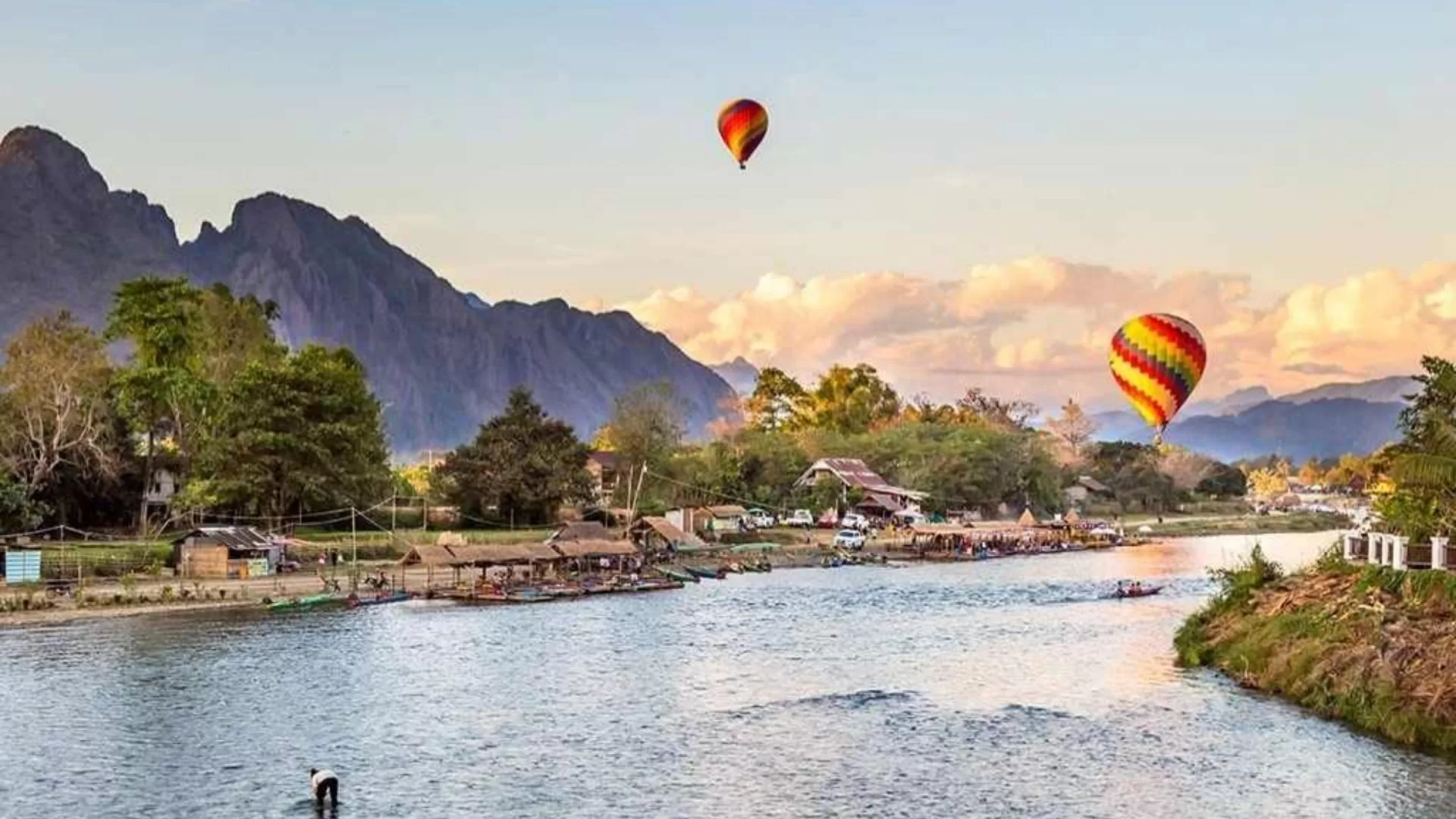
Located between Luang Prabang and Vientiane on the Laos travel map, Vang Vieng was once known as a party town, but in recent years, it has transformed into a haven for nature lovers and couples looking for a scenic getaway. Nestled along the Nam Song River and surrounded by dramatic karst mountains, Vang Vieng is as photogenic as it is peaceful.
Top things to do in Vang Vieng include:
Hot air balloon rides at sunrise – offering breathtaking views of the valley and mountains.
Explore Tham Chang and Tham Phu Kham Caves – sacred sites hidden within limestone cliffs.
Cycle through rice paddies and local villages – experience rural Laos up close.
Vientiane – The laid-back capital city of Laos
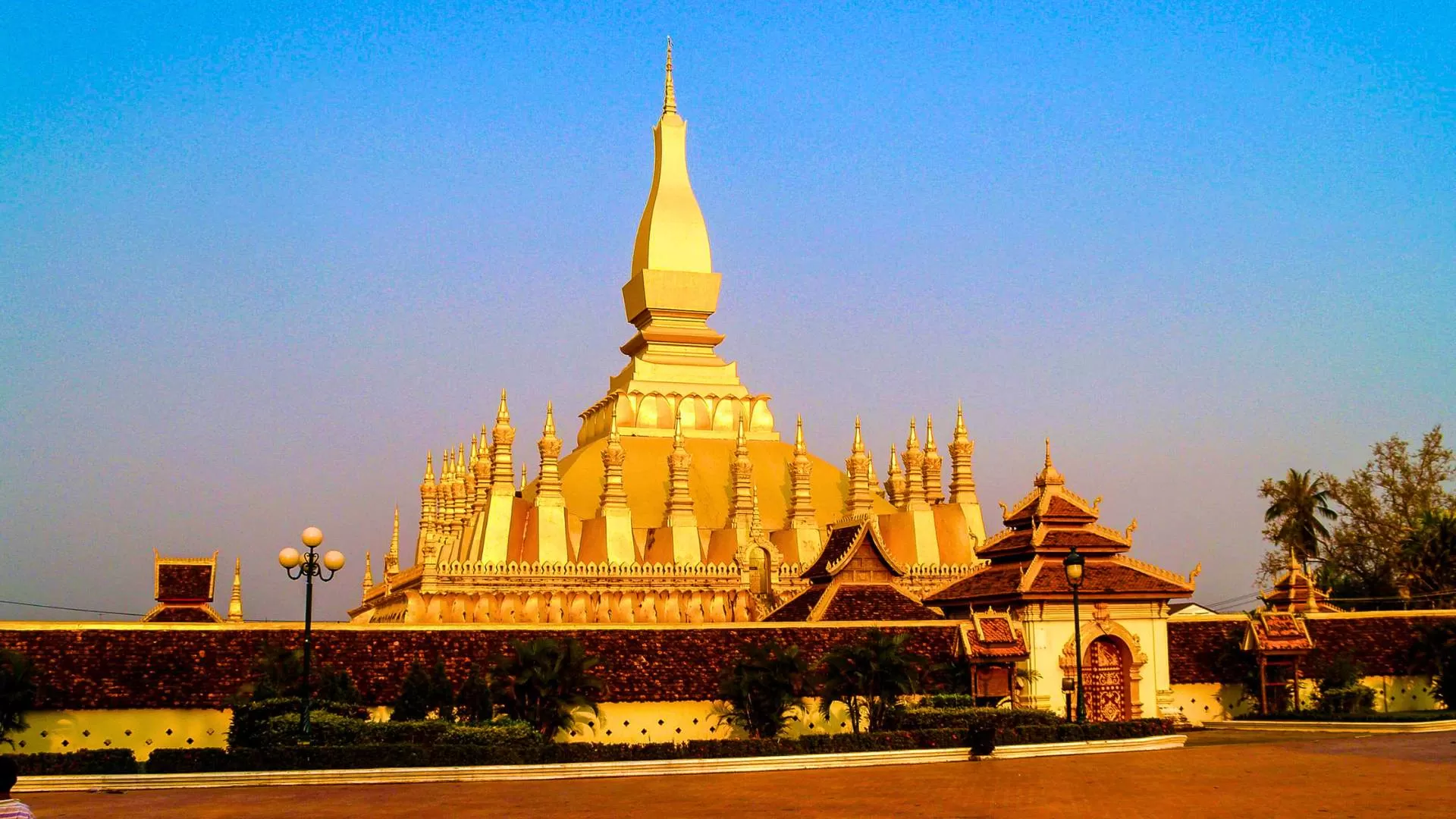
Located along the Mekong River near the Thai border, Vientiane is the capital and political heart of Laos. Easily found on the Laos map, Vientiane is often the starting point for journeys across the country. It’s also a place where the past and present quietly coexist. this city offers a unique charm—quiet streets, golden temples, tree-lined boulevards, and a gentle, unhurried pace of life that surprises many first-time visitors.
Some highlights for travelers include:
Pha That Luang – The most sacred monument in Laos, this golden stupa is a national symbol of Buddhist faith and Lao identity.
Patuxai Monument – Often referred to as Laos’s version of the Arc de Triomphe, it honors the country’s struggle for independence and offers panoramic views from the top.
Wat Sisaket – The oldest surviving temple in the city, home to thousands of Buddha statues in peaceful cloisters.
COPE Visitor Center – A powerful museum that educates visitors about the impact of unexploded ordnance (UXO) and the resilience of local communities.
Savannakhet – A peaceful and historic city
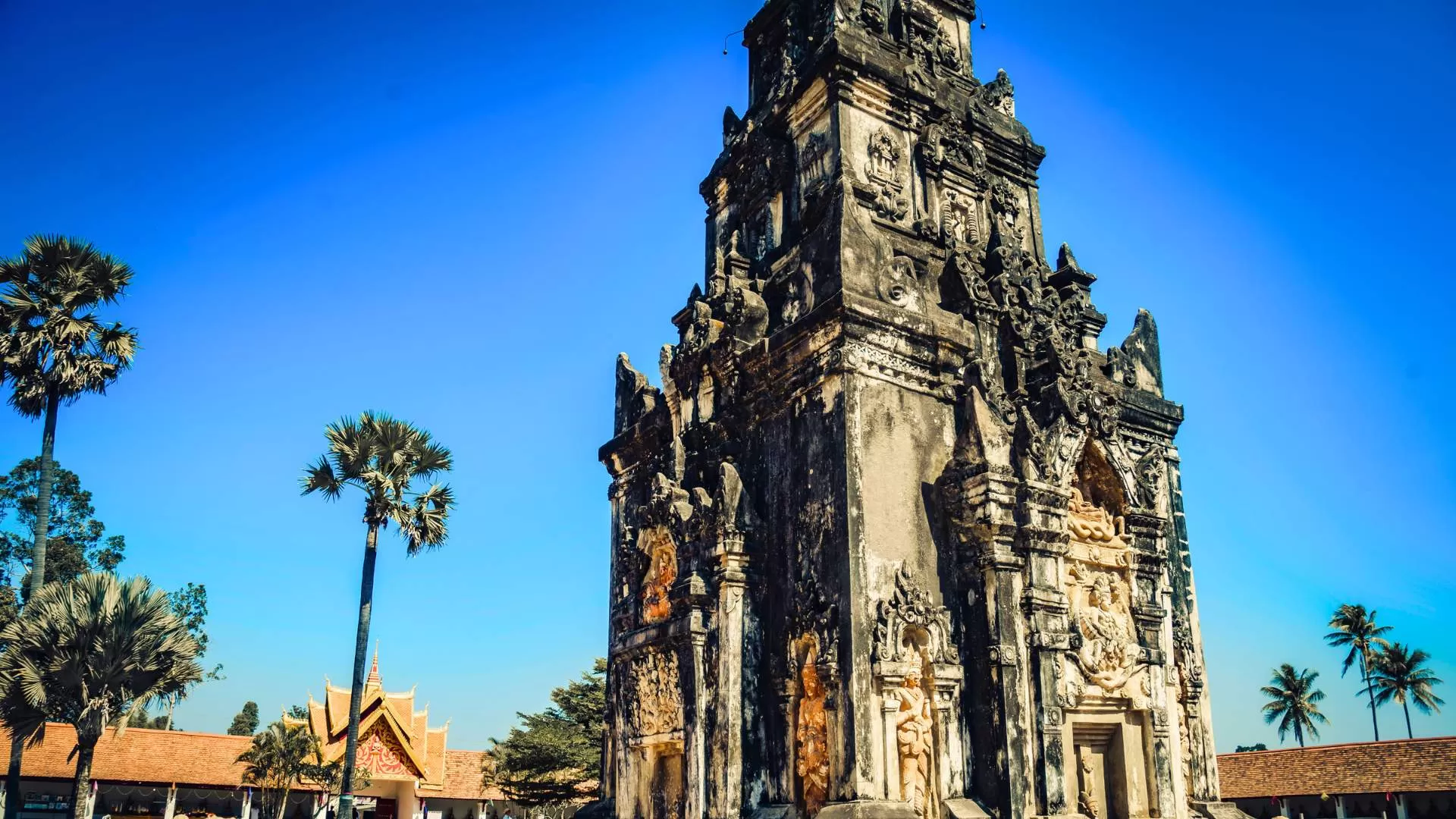
Positioned along the Mekong River in central Laos, Savannakhet is marked on any Laos travel map as the second-largest city in the country. Savannakhet plays a key role as a regional hub for commerce, culture, and connectivity, especially as a central stop along the East-West Economic Corridor. Savannakhet retains a calm, unhurried pace, making it a charming stop for travelers looking to explore beyond the well-trodden paths.
Top things to see and do in Savannakhet:
Visit Wat Sainyaphum, the city’s most revered temple, located near the river
Discover That Ing Hang Stupa, an important pilgrimage site just outside the city
Explore Savanxay market, attracting a large number of tourists who want to explore the local life and typical culture of Laos
Southern Laos travel map: Best place to visit
Southern Laos offers a refreshing change of pace, where lush landscapes, thundering waterfalls, and riverside villages invite you to slow down and connect with nature.
Pakse – Gateway to the south
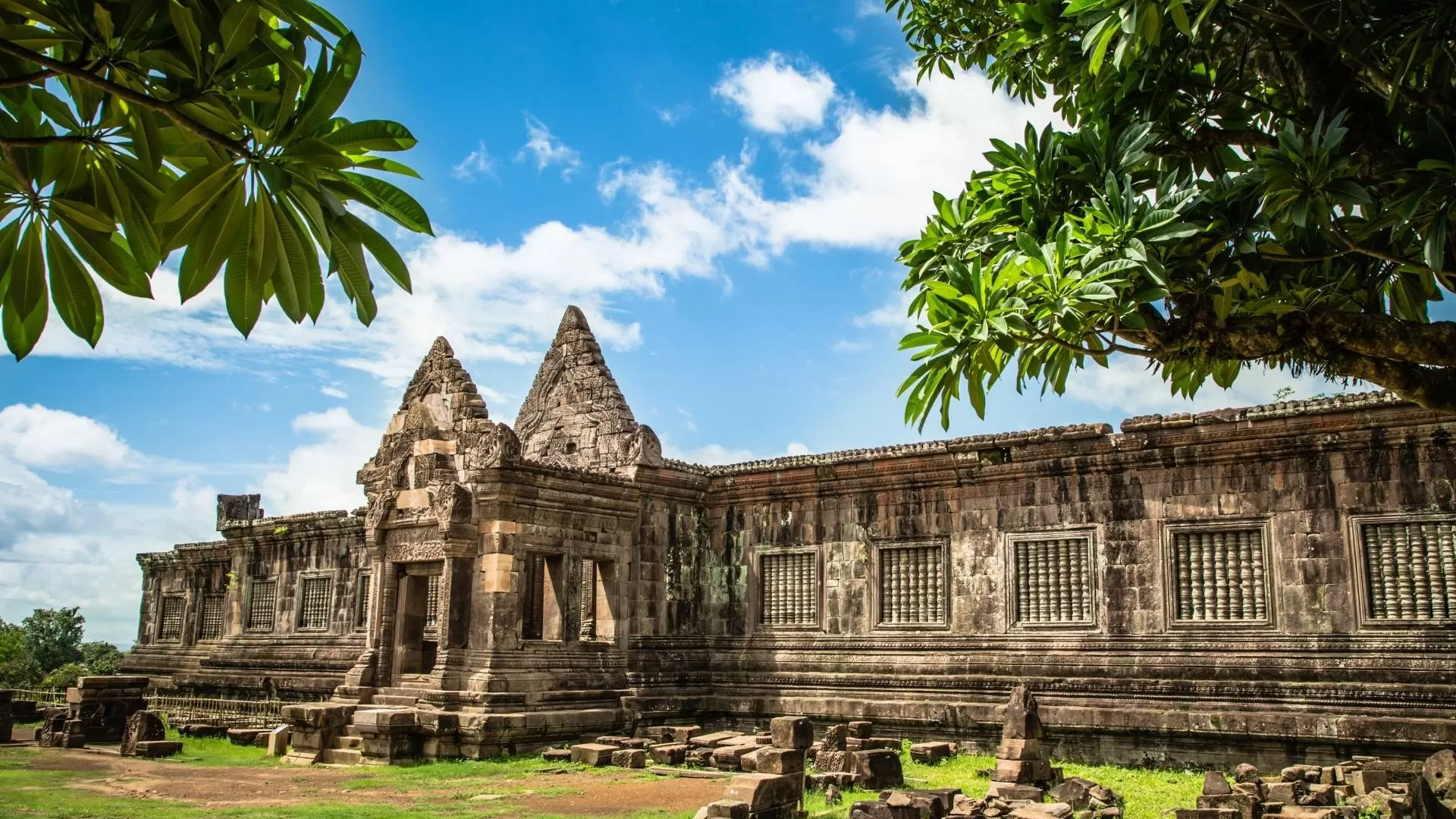
Pakse is the second largest city in Laos after Vientiane. Pakse is not only famous for the poetic Mekong River but also serves as a central hub connecting many of southern Laos’s most famous attractions. With its prime location along the Mekong and near the Thai border, Pakse is an important gateway for exploring Laos and an ideal destination for those seeking peace and a deep connection with nature.
Highlights in Pakse:
Wat Luang – The city's most important temple with serene river views
Visit Khone Phapheng – The majestic waterfall on the banks of the Mekong River
Day trips to Wat Phou, an ancient Khmer temple complex and UNESCO World Heritage Site
Bolaven Plateau – Coffee Country and Waterfalls

Just east of Pakse, the Bolaven Plateau is one of the most scenic areas on the Laos tourist map. Famous for its rich volcanic soil, this elevated region is the heart of Laos’s coffee industry and a haven for outdoor enthusiasts.
Top things to see and do:
Visit coffee plantations – Taste freshly brewed Robusta and Arabica straight from the source
Chase waterfalls – Explore stunning cascades like Tad Fane, Tad Yuang, and Tad Lo
Trek through ethnic minority villages – Learn about the culture of the Katu and Alak peoples
Si Phan Don (4000 Islands) – Life on the Mekong
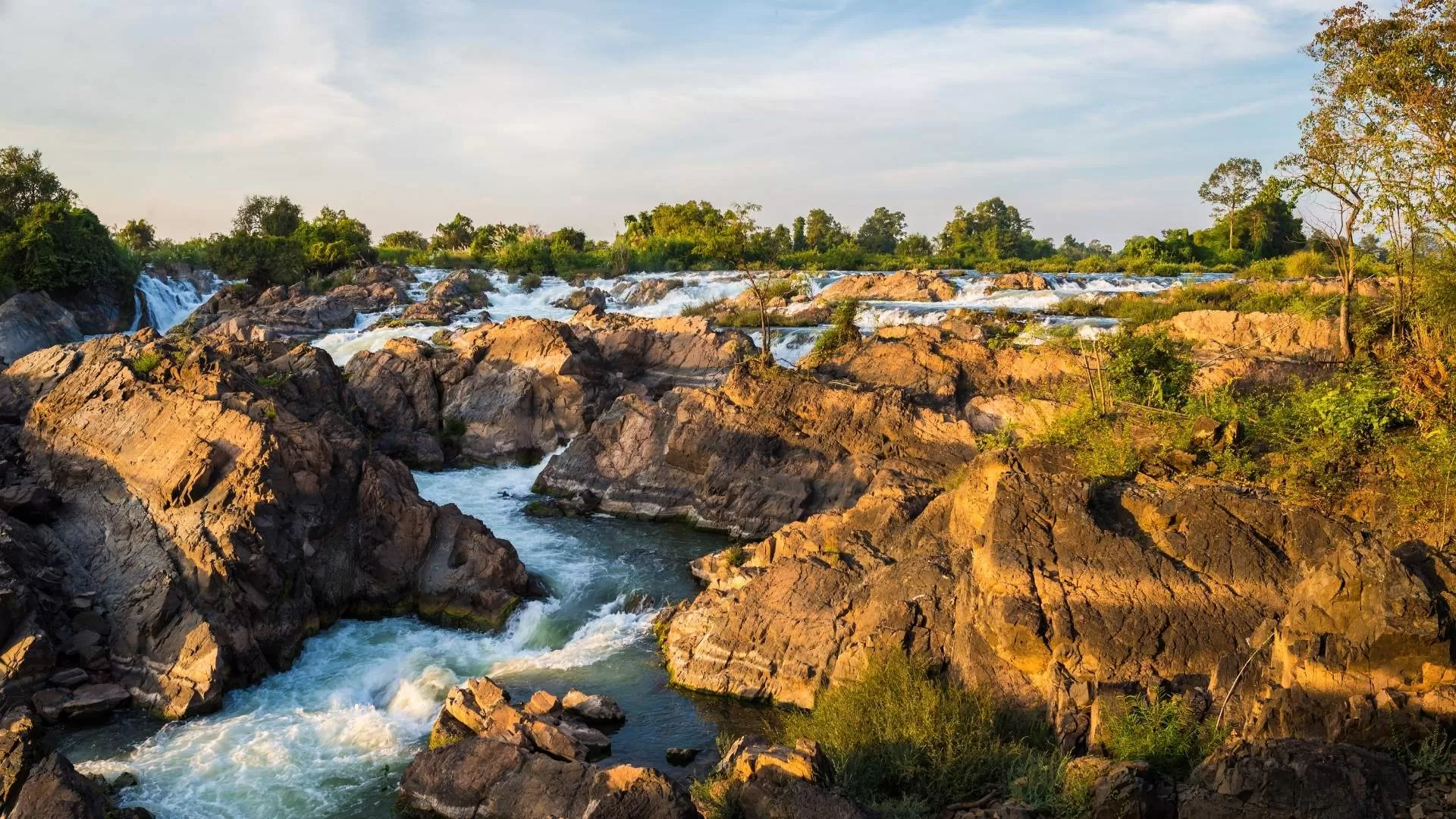
At the southern tip of Laos, near the Cambodian border, lies Si Phan Don, or the 4000 Islands. This unique river archipelago is dotted with small islands where life flows gently with the current. It’s a must-see on any Laos tourist map, especially for those in search of peace and nature.
Don’t miss in Si Phan Don:
Don Det & Don Khon – The most popular islands, known for their relaxed atmosphere and guesthouses
Li Phi Falls (Tat Somphamit) – Powerful rapids surrounded by jungle scenery
Irrawaddy dolphin watching – Spot these rare freshwater dolphins in the Mekong
Suggested itinerary for your Laos journey
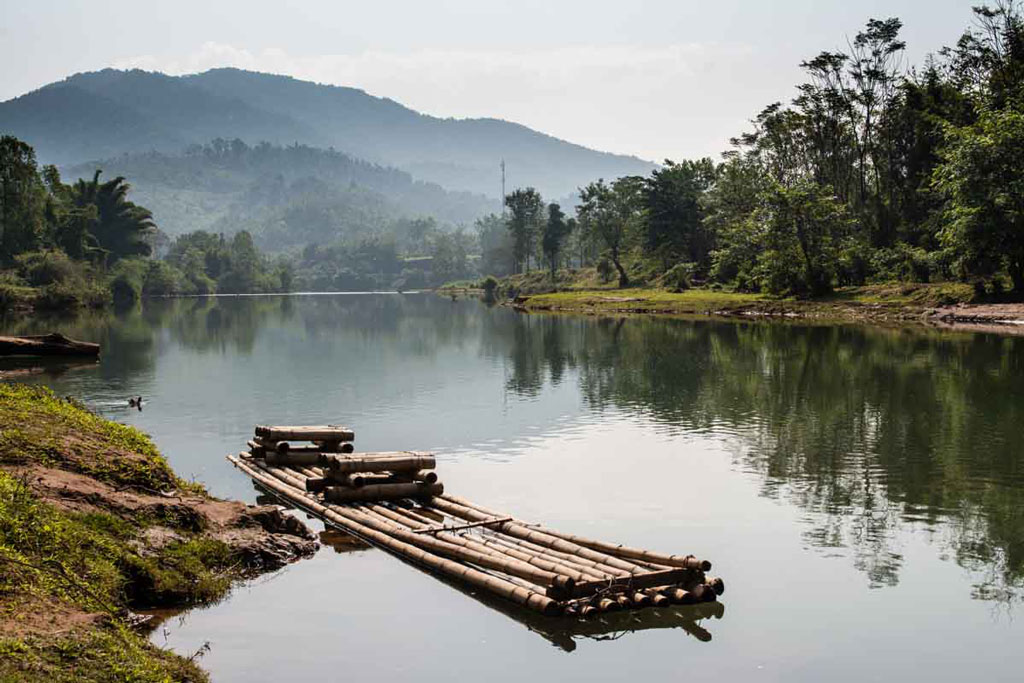 | 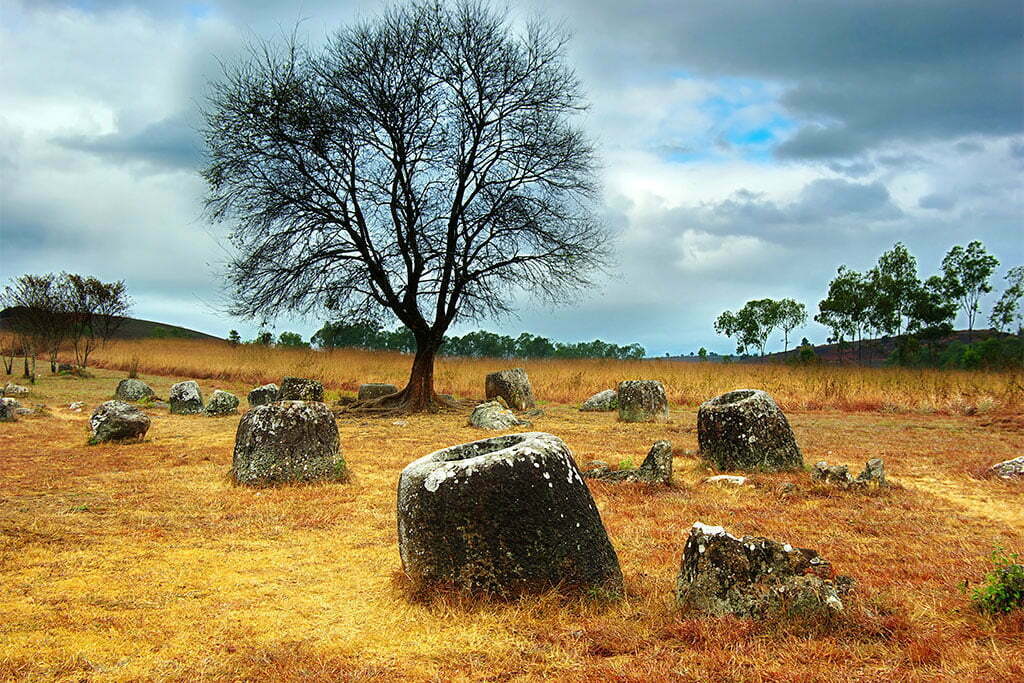 | 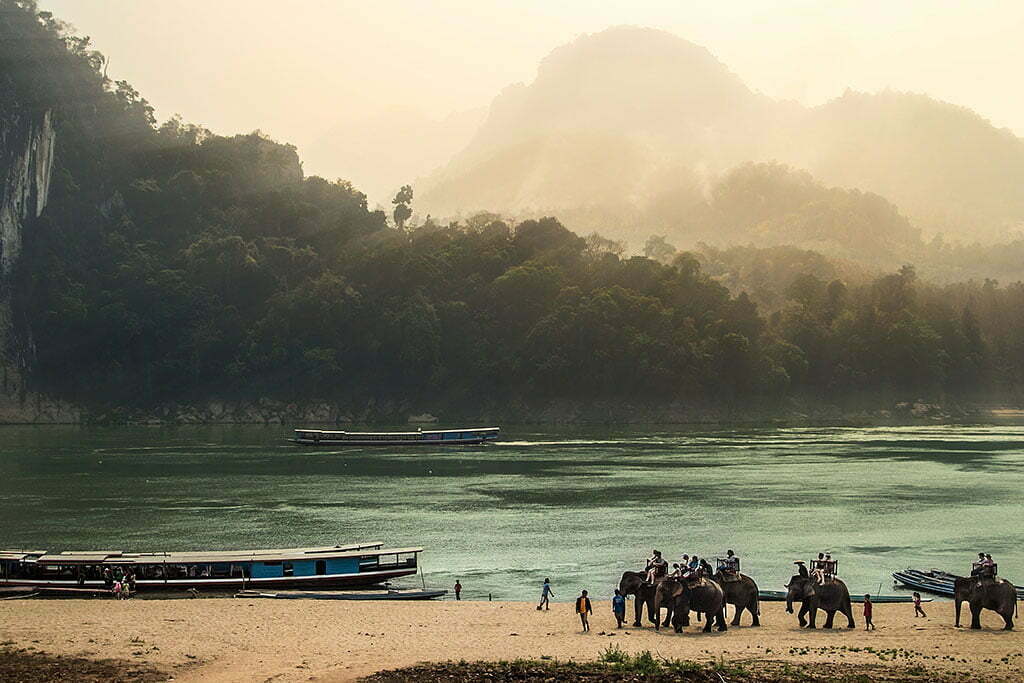 |
|---|
If you're dreaming of a slow-paced, culturally rich journey through Southeast Asia, Laos is the perfect destination. With 18 days, you’ll have enough time to immerse yourself in the country’s serene landscapes, spiritual heritage, and riverside charm. With your Laos travel map in hand, here’s a carefully designed itinerary that takes you from the mountains of the north to the tranquil islands in the south.
📍Itinerary:
Day 1 : Luang Prabang
Day 2 : Luang Prabang - Tuk Tuk
Day 3 : Luang Prabang - Oudomxay
Day 4 : Oudomxay - Trekking
Day 5 : Oudomxay - Muang La
Day 6 : Muang La - Muang Ngoi
Day 7 : Muang Ngoi - Nong Khiaw
Day 8 : Nong Khiaw - Luang Prabang
Day 9 : Luang Prabang
Day 10 : Luang Prabang - Xiengkhuang
Day 11 : Xiengkhuang
Day 12 : Xiengkhuang - Vang Vieng
Day 13 : Vang Vieng - Vientiane
Day 14 : Vientiane
Day 15 : Vientiane - Paksé
Day 16 : Paksé - Khong Island
Day 17 : Khong Island - Khone Island
Day 18 : Khong Island - Vientiane - Departure
For more details, you can read Laos family tour 18 days
Visiting Laos: Must-know tips for first-time travelers
To ensure a smooth and enjoyable trip to Laos, travelers should consider the following tips:
Visa requirements:Most travelers can get a 30-day tourist visa on arrival, with some nationalities now eligible for up to 60 days. Visa exemptions apply for certain ASEAN countries (up to 30 days) and others (up to 14 days). A passport valid for 6 months beyond your stay is required. For more details.
Pack light and breathable clothing: With high temperatures, it’s essential to wear comfortable, lightweight fabrics like cotton and linen.
Stay hydrated and use sunscreen: The sun can be intense, so carrying a reusable water bottle and applying sunscreen regularly is advisable.
Respect local customs: When visiting temples, dress modestly by covering shoulders and knees, and always remove shoes before entering sacred sites.
Carry cash: While major cities have ATMs, remote areas may not, so it’s good to have some local currency Lao Kip on hand.
Laos is a land of serene beauty and rich culture—perfect for travelers seeking authentic experiences. With this Laos travel map, you’re all set to explore its highlights from north to south. Ready to start planning your adventure? Let Hanoi Voyages help you craft a personalized itinerary that turns your dream trip into reality.
Dream about your trip to Asia, in private
We are here to make it happen with youFREE QUOTE, WITHOUT OBLIGATION






